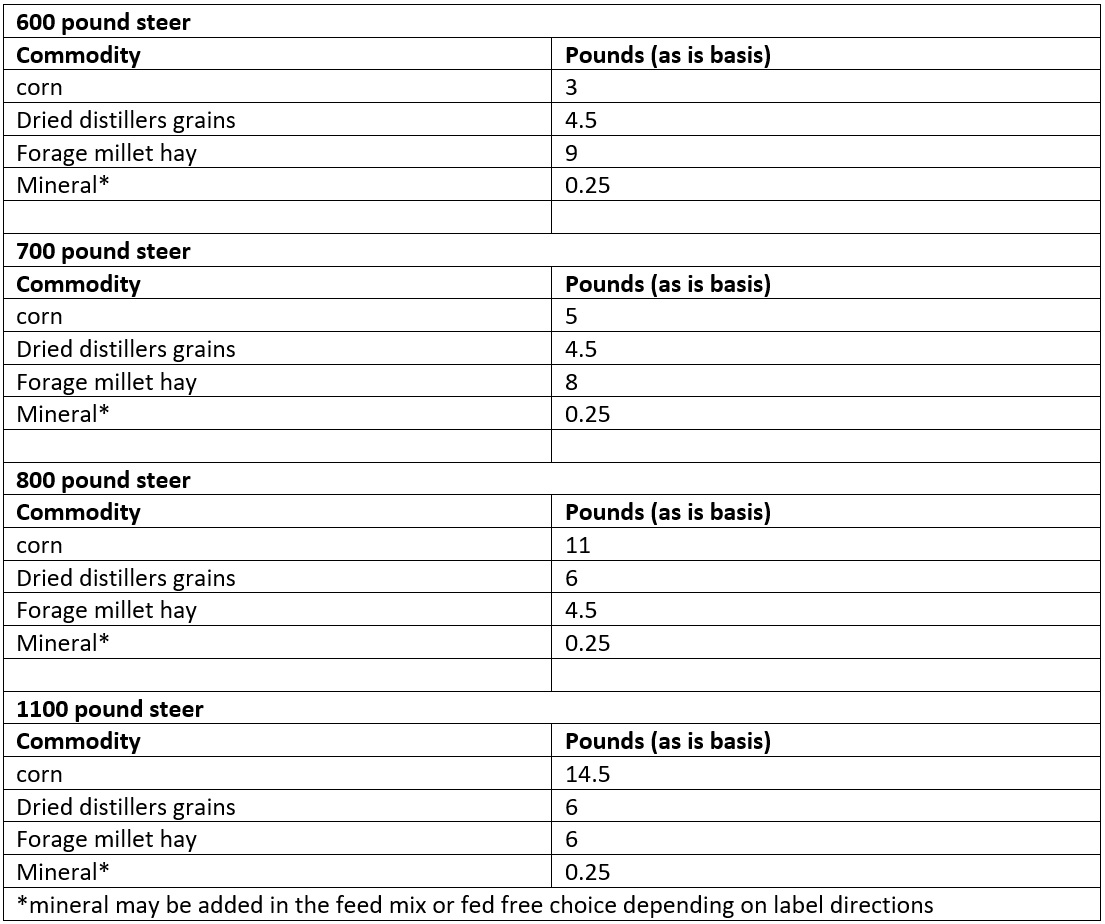![]()
By Karla Wilke, UNL Cow/Calf systems and stocker management

Now that fall is here, and most spring-born calves are being weaned, 4-Hers and FFA students across Nebraska are looking over the calf crops and picking out market steer prospects for the 2024 county fair. Calves are carefully evaluated against a list of criteria, selected, and brought home. Now what?
Understanding the Nutrient Needs of the Growing Calf
Commercially prepared complete feeds and supplements are definitely available and may be what works best for a given family. However, developing a diet out of bulk commodities may be more economical for others and certainly gives parents a chance to introduce their child to ruminant nutrition, basic animal husbandry, and hopefully foster a love for the beef industry.
Assuming the weaned steer is 600 pounds in November and will be shown at a county fair in July, the calf would need to gain around 3 pounds per day to weigh approximately 1300 pounds by fair.
The following is an example of how an energy source, a protein source, and a roughage source could be increased as the animal grows to meet the nutrient requirements of a growing and finishing steer. Different commodities might be available, but cannot necessarily be substituted in the same amounts due to different nutrient content. Nebraska beef focused extension personnel can assist in ration development.
The two things to keep in mind are that 1) the steer‘s feed intake is going to increase as the animal grows to continue to support growth, and that 2) the goal is to increase the energy density of the diet so that the steer is finished by fair time. With that in mind, here are 4 diets using the same ingredients given approximate pounds of each ingredient for the changes in steer weight and energy density.

Managing Feeding to Minimize Digestive Upsets
Slow increases in feed. All feed increases should be done over a few days, especially increases in energy feeds, to avoid digestive upsets. While some families may be able to provide ground hay in total mixed ration, others may choose to provide some long stem hay separately to help maintain rumen function.
Feeding twice a day. Feeding twice a day rather than once a day also helps prevent cattle from overloading on feed. This can also help care providers judge when the steers are ready for a feed increase. Cattle who are “rushing the bunk” may need an increase, while cattle who are leaving feed may need a slight decrease or new feed in the bunk.
Consistently feeding at the same times every day, seven days a week. Consistent feeding times help reduce digestive upsets as well. This is especially true as cattle grow and are on a higher energy density diet.
Water is critical. While a lot of emphasis is put on protein, energy, minerals, and vitamins, the importance of water cannot be overlooked. Cattle need a consistent supply of fresh water at all times and this is just as important in the winter as it is in the summer.
Encouraging Responsibility while Providing Oversight
Many students who are involved in 4-H or FFA are also involved in many other school activities as well. This often means early mornings to meet the bus, or late nights coming home from out of town games. This can make getting the steers fed on a regular schedule difficult. This is often times where parents have to step in and help cover some chores. Consider making it the student’s responsibility to ask someone to cover for them, weigh up feed in advance, make preparations for their absence, check in to see how the feeding went, etc. This helps them develop more of a sense of ownership and responsibility rather than just assuming the parent will cover for them.
Discussing feedings when the student was gone and helping the student feed when they are home, can be good times to discuss bunk management, feeding changes, and steer progress.
Students who participate in livestock projects for 4-H and/or FFA can develop great work ethic and a passion for the beef industry. Additionally, it can be a great experience as a family to work and learn together.
Interviews with the authors of BeefWatch newsletter articles become available throughout the month of publication and are accessible at https://go.unl.edu/podcast. Subscribe to the BeefWatch newsletter here: http://go.unl.edu/Beefwatch_subscribe.
